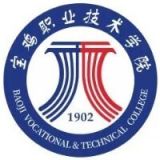如何建立和完善职业培训课程体系?

Step 1: Define Training Needs and Goals
- Identify the specific skills and knowledge gaps of the target audience.
- Determine the desired outcomes of the training program.
- Establish clear learning objectives that align with the training goals.
Step 2: Develop a Training Needs Assessment
- Conduct surveys, interviews, or focus groups to gather insights into the training requirements.
- Analyze existing documentation, such as job descriptions and performance reviews.
- Identify areas where training is needed to improve employee performance.
Step 3: Create a Training Curriculum
- Select the appropriate training methods, such as in-person workshops, online courses, or e-learning modules.
- Develop a structured curriculum that covers the essential topics and skills.
- Ensure the curriculum is aligned with the training needs assessment results.
Step 4: Select and Train Instructors
- Recruit experienced and qualified instructors who possess the necessary skills to deliver the training.
- Provide training on the training methodology, materials, and assessment techniques.
- Ensure instructors are certified or have relevant experience.
Step 5: Implement and Evaluate the Training Program
- Implement the training program according to the curriculum and schedule.
- Provide ongoing support and feedback to participants.
- Conduct regular assessments to track progress and measure the effectiveness of the training.
Step 6: Continuous Improvement
- Gather feedback from participants and instructors to identify areas for improvement.
- Review and update the training program regularly to reflect changes in the industry, technology, or business needs.
- Stay updated on the latest training trends and best practices.
Step 7: Measure ROI
- Calculate the return on investment (ROI) by comparing the costs of training to the benefits gained in terms of increased productivity, reduced turnover, and improved job performance.
Additional Tips:
- Establish clear communication channels between the training department and other departments.
- Foster a culture of continuous learning and development.
- Provide opportunities for employees to network and share best practices.
- Offer incentives for participation and completion.




















































































































